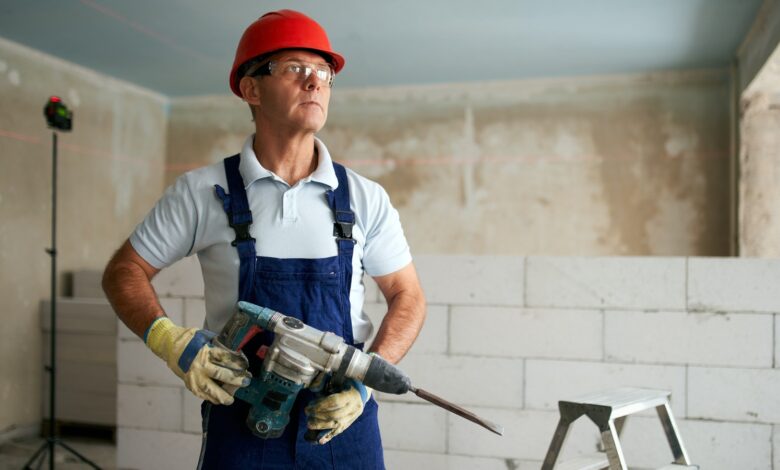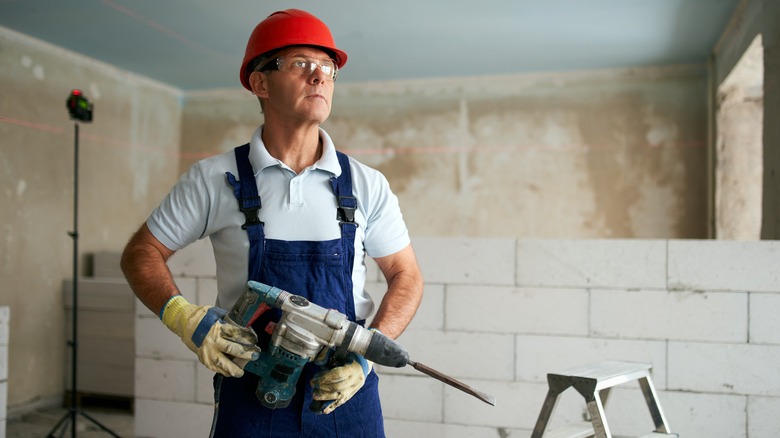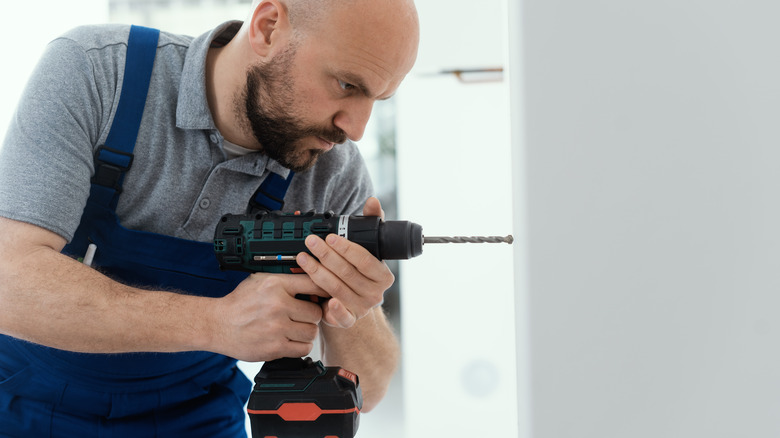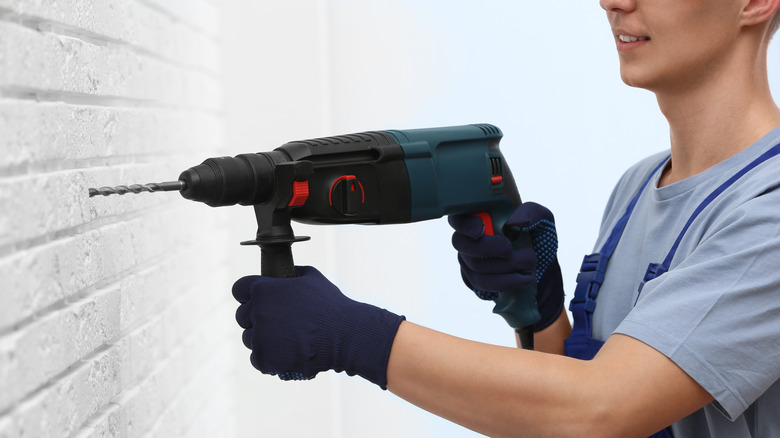Rotary Hammer Vs. Hammer Drill: What’s The Difference?


Artie Medvedev/Shutterstock
Power drills aren’t only used for shoving screws into wooden planks. Whether you’re remodeling your home or building one from scratch, holes need to be made into all kinds of surfaces, both for the aforementioned purpose of adding fasteners and for wholesale destruction and removal. It’d be one thing if you were remodeling a log cabin, but if you’re working on a normal home with concrete walls and foundations, a regular power drill won’t do. In these situations, you’ll need to move up to something with a little more muscle, something with the destructive force of a hammer in addition to the rotational force of a drill.
As it happens, there are actually two power tools that fit this bill: the rotary hammer and the hammer drill. In a vacuum, these two tools kind of sound like the same thing, a hammering device that also spins. But while these two tools have some similarities in their uses, they’re intended for completely different jobs. Before you run off to your local Lowe’s for remodeling tools to grab the first spinning hammer you set eyes on, you should know the difference, as well as which you need for your particular job.
Hammer drill specifics and uses

Demaerre/Getty Images
Between hammer drills and rotary hammers, the former is closer in design and utility to a traditional power drill. Hammer drills can be compact enough to comfortably hold in one hand (though you should use two hands to stabilize), as well as stash on a tool belt when not in use. Many hammer drills from brands like Milwaukee, Makita, DeWalt, and Ryobi offer models that use battery packs instead of power cords, making them much more portable. While there are some rotary hammers with the same power options, they’re less common than battery-powered hammer drills.
So, what do you actually use a hammer drill for? These tools are intended for small, precise drilling into thick, hard materials like concrete. The bit on a hammer drill rotates in much the same way as a power drill, but as it spins, the bit also rocks back and forth, adding a percussive effect. This extra penetrative vibration allows the bit to pierce materials that would be too resilient against rotation alone. As an extra bit of convenience, some hammer drills may also have multiple modes for percussive and non-percussive drilling, allowing them to double as a traditional power drill if you don’t need the extra force.
Rotary hammer specifics and uses

New Africa/Shutterstock
Inserting simple screws and nails isn’t the only reason you might need to drill into concrete. If you’re building a house’s foundation, you need much larger, deeper holes to insert rebar anchors. Or, if you’re demolishing and remodeling, a chunk of concrete that’s in the way may need to be chiseled down to a more manageable size. In either case, that’s when it’s time to bust out the rotary hammer. Rotary hammers are produced by Makita, DeWalt, Milwaukee, and by other brands that make hammer drills. Though corded power is more common than battery power to compensate for the extra muscle.
Power is the name of the game here; in addition to a rotary hammer’s generally larger size compared to a hammer drill, the way it adds force to its drill bit is completely different. Where hammer drills use a small vibrating mechanism, rotary hammers pound their bits with powerful hydraulic pistons. Rotary hammers are less like stronger power drills, and more like simpler jackhammers, pounding and smashing masonry to make way for whatever’s coming next. Rotary hammers are also much heavier than hammer drills – while you could conceivably operate the latter with one hand, you’ll definitely need both hands on deck just to lift a rotary hammer, to say nothing of actually using it.


